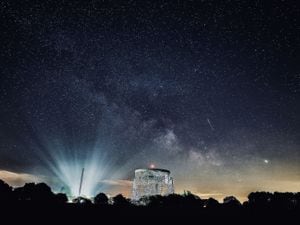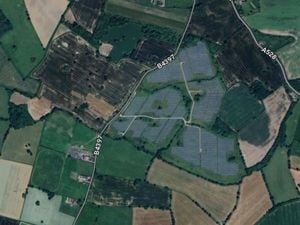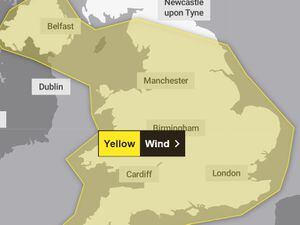Stargazing in February: Once-in-a-lifetime chance to see the Green Comet plus a Super Moon
February is set to get underway with a good chance of seeing a comet that will be at its closest point to our planet for 50,000 years.

The Green Comet will reach its closest point on February 1 - then it will be followed a few days later by a full moon.
Later in the month will be another Super New Moon, with particularly dark skies making for a good chance to see the stars and planets by night.
The West Midlands has several destinations that make good stargazing sites on clear nights, including in the Shropshire Hills where four distinct spots have been designated Dark Sky Discovery sites.
They are the car parks at Carding Mill Valley, Cross Dyke, Pole Cottage and the Shooting Box. All four sites have the darkest Milky Way Class rating, meaning that the skies should be dark enough to see the Milky Way with the naked eye.
The Wrekin near Telford is another Dark Sky Discovery site, while Cannock Chase is home to no fewer than seven sites recommended by Go Stargazing based on light pollution, distance from nearby towns and parking provision.
Those sites are the car parks at Brindley Bottom, Camp Field, Coppice Hill, Penkridge Bank, the White House, Stile Cop and Seven Springs.
There are a multitude of free stargazing phone apps to help identify and track celestial objects, including the planets we share our solar system with.
February 1: The Green Comet comes close
The first night of the month should be a memorable one - a greenish comet that only orbits the sun every 50,000 years is due to be at its closest point to Earth and could be visible from our planet in a once-in-a-lifetime opportunity.
C/2022 E3, also as the Green Comet, was first discovered by scientists in March last year. It appears surrounded by a green glow because of the effects of the sun on its molecules.
The comet is set to come within a mere 26 million miles of Earth on the night of February 1, its closest approach for about 50,000 years - it is believed the last time it came this close was during the Upper Paleolithic era, around the time modern humans were migrating out of Africa.
Some have already reported seeing the comet as it approaches its closest point to Earth - with luck it will be visible from dark sky sites away from light pollution as a small greenish smudge, but you may want to use binoculars or a telescope.
February 5: Snow micromoon
February's full moon will come early in the month and is known as the 'snow moon' - simply because it tends to coincide with snowfall and cold weather.
A full moon comes once a month, when the whole face of the moon appears lit up from Earth.
For the second month in a row, the full moon will be what is called a 'micromoon' because it occurs near the point in the moon's orbit when it is furthest away from the Earth, and so appears smaller in the night sky than at other times.
The micromoon may also appear less bright.
February 20: Super New Moon
The New Moon is when the sun and moon are aligned, with the moon coming between the sun and our Earth.
It means the side of the moon facing us will be in darkness and the night sky will be especially dark, making nights like these perfect for spying distant stars or planets.
Because of the elliptical shape of the moon's orbit around Earth, it gets closer and further away from us throughout the month.
When a New Moon occurs while the moon is near its closest point to Earth, like it will on February 20, it is called a Super New Moon. The moon should appear bigger and indeed brighter than at other times of the month.





